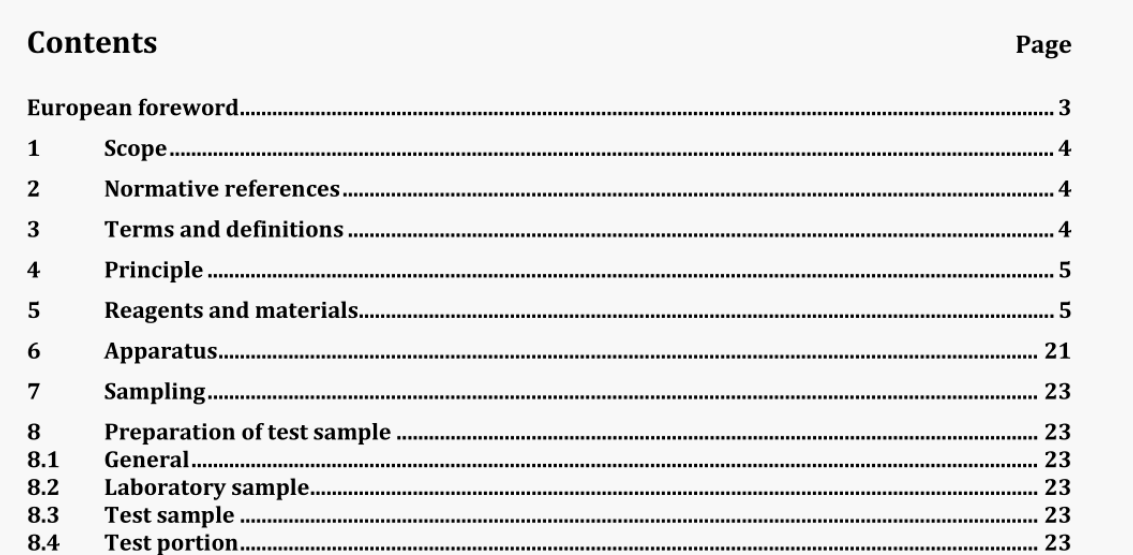BS EN 17299:2019 pdf download.Animal feeding stuffs: Methods of sampling and analysis一Screening and determination of authorized coccidiostats at additive and 1 % and 3 % cross-contamination levels
1 Scope
This document specifies a high performance liquid chromatographic – tandem mass spectrometry (HPLC- MS/MS) method for the simultaneous screening and/or determination of the eleven authorized coccidiostats (halofuginone hydrobromide, robenidine hydrochloride, nicarbazin, diclazuril, decoquinate, monensin sodium, salinomycin sodium, narasin, lasalocid A sodium, semduramicin sodium and maduramicin ammonium alpha) contents in compound feeds and feed materials of plant origin at additive and cross-contamination levels and of the five non-registered coccidiostats (ethopabate, clopidol, ronidazole, dimetridazole and amprolium) at sub-additive levels and for the screening of the prohibited furazolidone antibiotic at sub-additive level, in the same matrices. It has been fully validated only for poultry, cattle and pig compound feeds. The range of application of the method is fit for the purpose of the screening and determination of all eleven registered coccidiostats at the values set by European legislation, of the non-registered coccidiostats and of the screening of the banned antibiotic.
9.3 Sample preparation
9.3.1 Extraction
Prepare 2 replicate test portions [8.4) from each unknown sample. Add 40 ml of solvent mixture for the feed extraction (5.11). Close tightly the polypropylene centrifuge tube (6.14) and check that there is no leak through the cap. Shake vigorously to ensure all the feed is suspended in the extraction solvent and then put it in an ultrasonic bath [6.5) set at 22 °C for 0,5 h. Then perform a solid-liquid extraction by shaking the mixture head to head for 1 h on the shaker (6.6) followed by centrifugation at 1 850 g and 20 °C during 10 min (6.20). The PCS and NCS are submitted to the same procedure but as single analysis (no replicates). NOTE The unknown samples for which a simple screening is desired, are subjected to the same procedure (9.3) but with a single analysis (no replicates) as for the PCS and NCS.
9.3.2 Filtration
Filter the supernatant obtained in 9.3.1 (for the compound feeds and for the PCS and the NCS) through a 0,2 um polyamide 6.6 syringe filter (6.17) into a clean polypropylene tube (6.14). For compound feeds containing coccidiostats at cross-contamination levels and potentially non- registered coccidiostats [ethopabate, clopidol, ronidazole, dimetridazole and/or amprolium) and the banned antibiotic furazolidone at sub-additive levels and the PCS, proceed directly to 9.4. For the NCS, proceed to 9.5.2.
BS EN 17299:2019 pdf download
